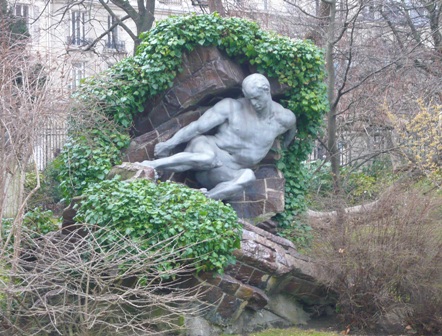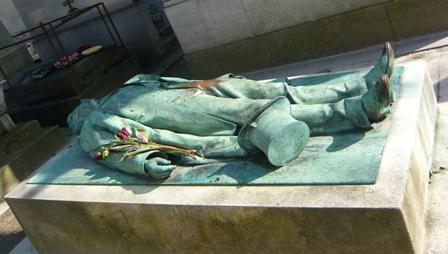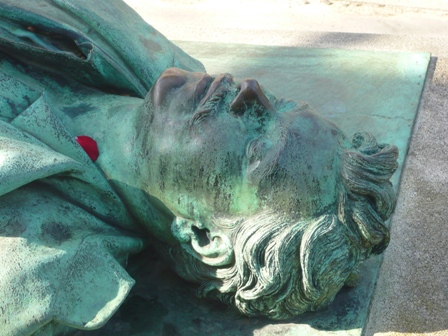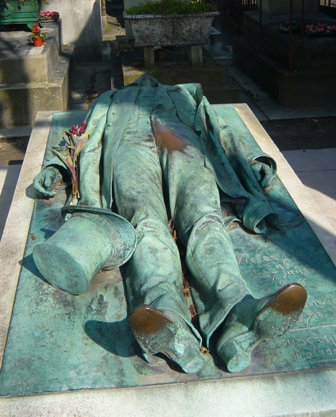- Details
- Parent Category: Statues Paris
The Grave of Victor Noir by Aimé Jules Dalou (1891) in Père Lachaise.
Victor Noir was a journalist working for the La Marseillaise newspaper.
He and another journalist were picked by the editor of the newspaper to deliver a challenge to a duel to Prince Pierre Napoleon Bonaparte on 10 January 1870.
However, for one reason or another, Victor Noir ended up being shot by the prince during that meeting. He died aged just 22 years old.
The killing caused outrage and more than 100,000 people followed the funeral cortege to Neuilly cemetery.
Victor Noir was a protegé of the great republican writer Victor Hugo who raised money by public subscription for this statue.
In 1891 his body was moved to Père Lachaise.
Dalou depicted Victor Noir fallen to the ground, lying on his back with top hat and suit.
This very realistic statue - with a bulge in the right place - has led to some strange customs.
It is said that women searching a husband, will succeed before the year is over if they rub the statue and place a flower in his hat. As a result certain parts of the blue patina has been worn off.
- Details
- Parent Category: Statues Paris
The stone figure of Varsovie is above the third plinth from the left outside Gare du Nord.
The figure of Warsaw by François Jouffroy (1865) is one of the eight larger statues on the cornice line of Gare du Nord, representing international destinations reached from Paris by this railway (at that time) as well as Paris.
They are from left to right:
Frankfurt
Amsterdam
Warsaw
Brussels - also by François Jouffroy
Paris
Berlin
Cologne
London
Vienna
Warsaw leans on the city shield with her right hand. Her left arm is slightly elevated.
She wears a crown. Her long gown is draped forward over her left shoulder.
- Details
- Parent Category: Statues Paris
The stone figure of Vienne is above the furthest right plinth outside Gare du Nord.
The figure of Vienna by Jean-Louis-Nicolas Jaley (1865) is one of the eight larger statues on the cornice line of Gare du Nord, representing international destinations reached from Paris by this railway (at that time) as well as Paris.
They are from left to right:
Frankfurt
Amsterdam
Warsaw
Brussels
Paris
Berlin
Cologne
London
Vienna
Vienna wears a long gown draped over her left shoulder and a crown. With her left hand she leans on a large shield depicting a double headed eagle and a crown.
Between the index finger and thumb of her right hand she holds a cepter which leans on her upper right arm.






